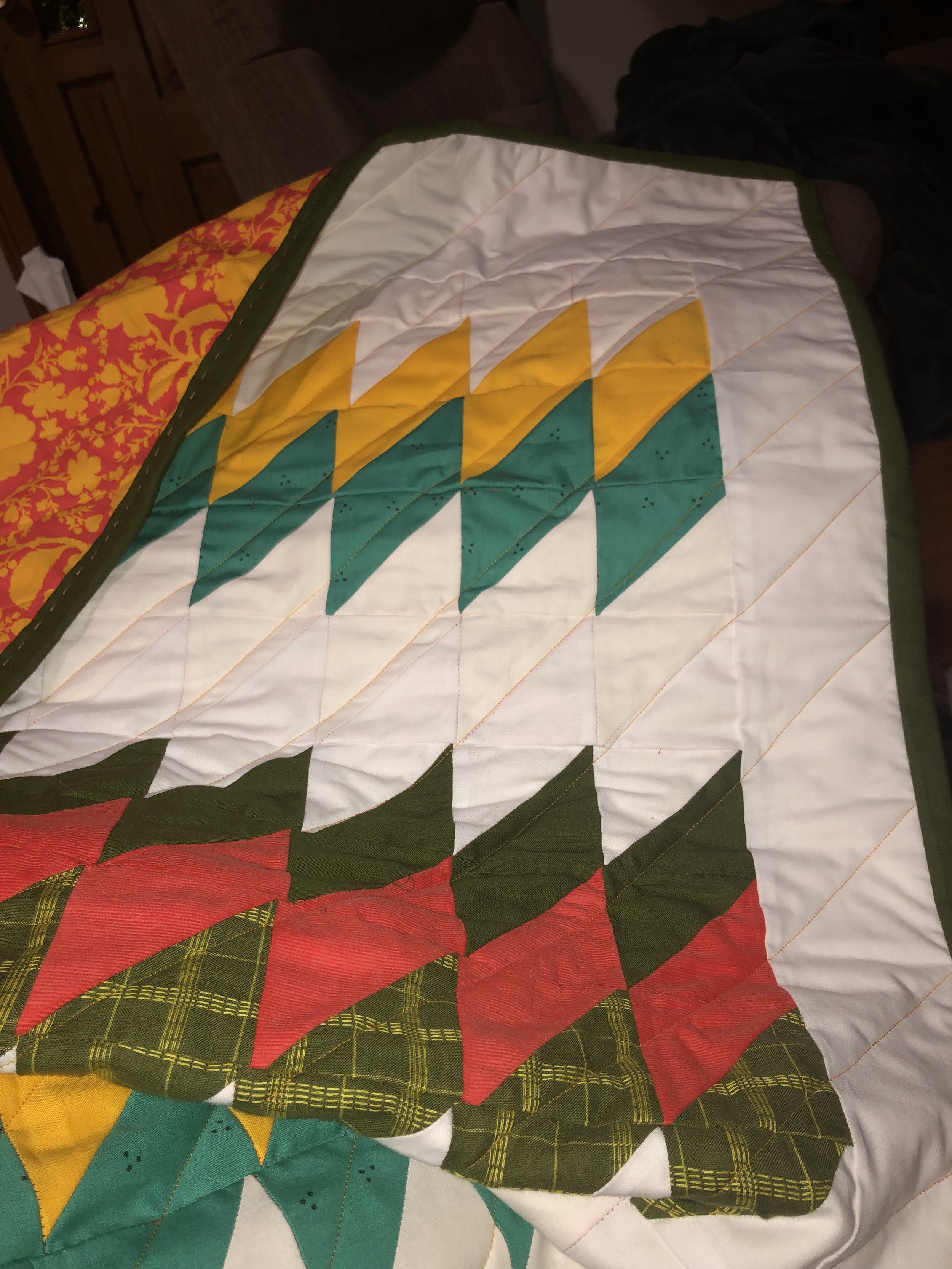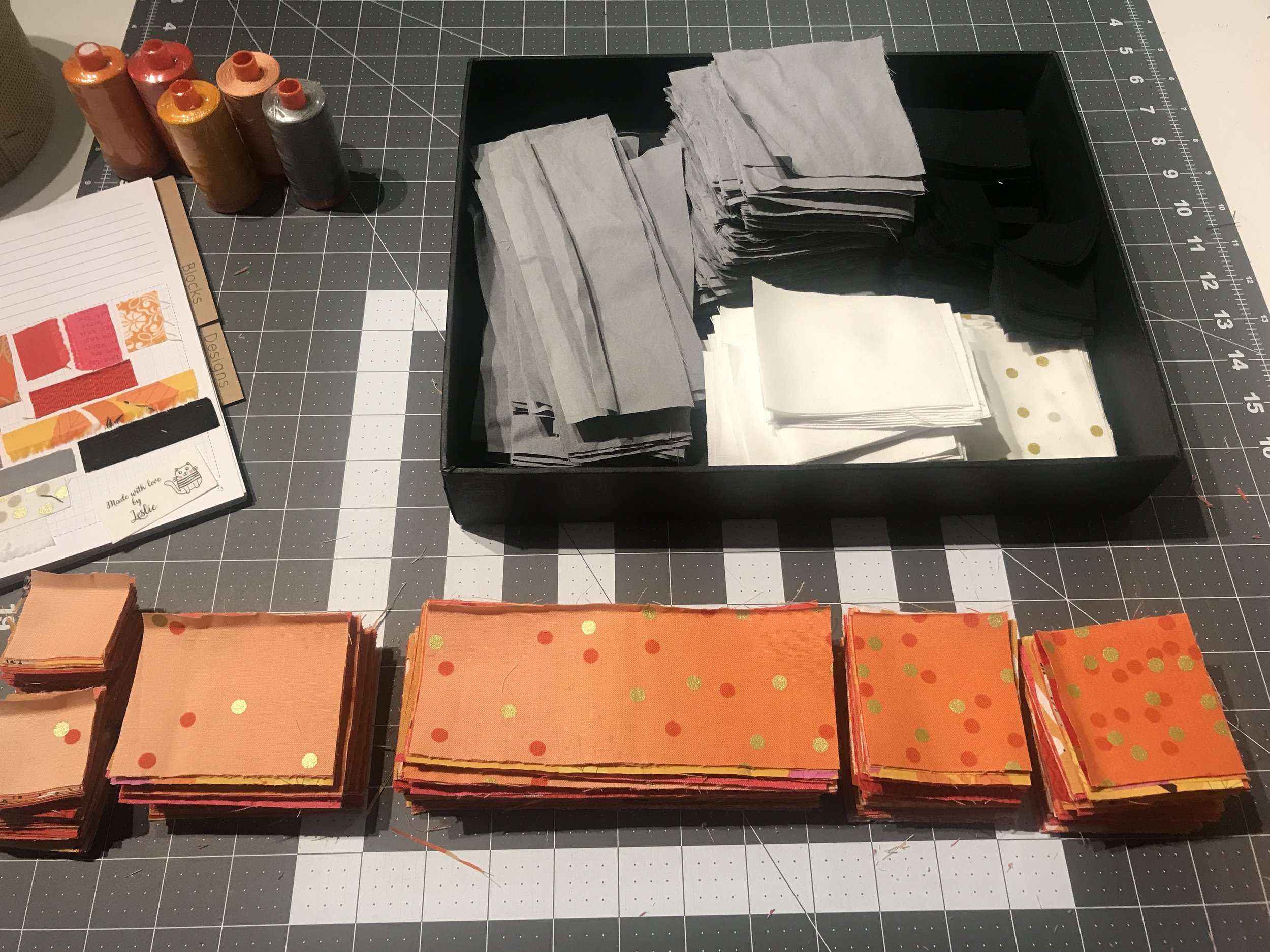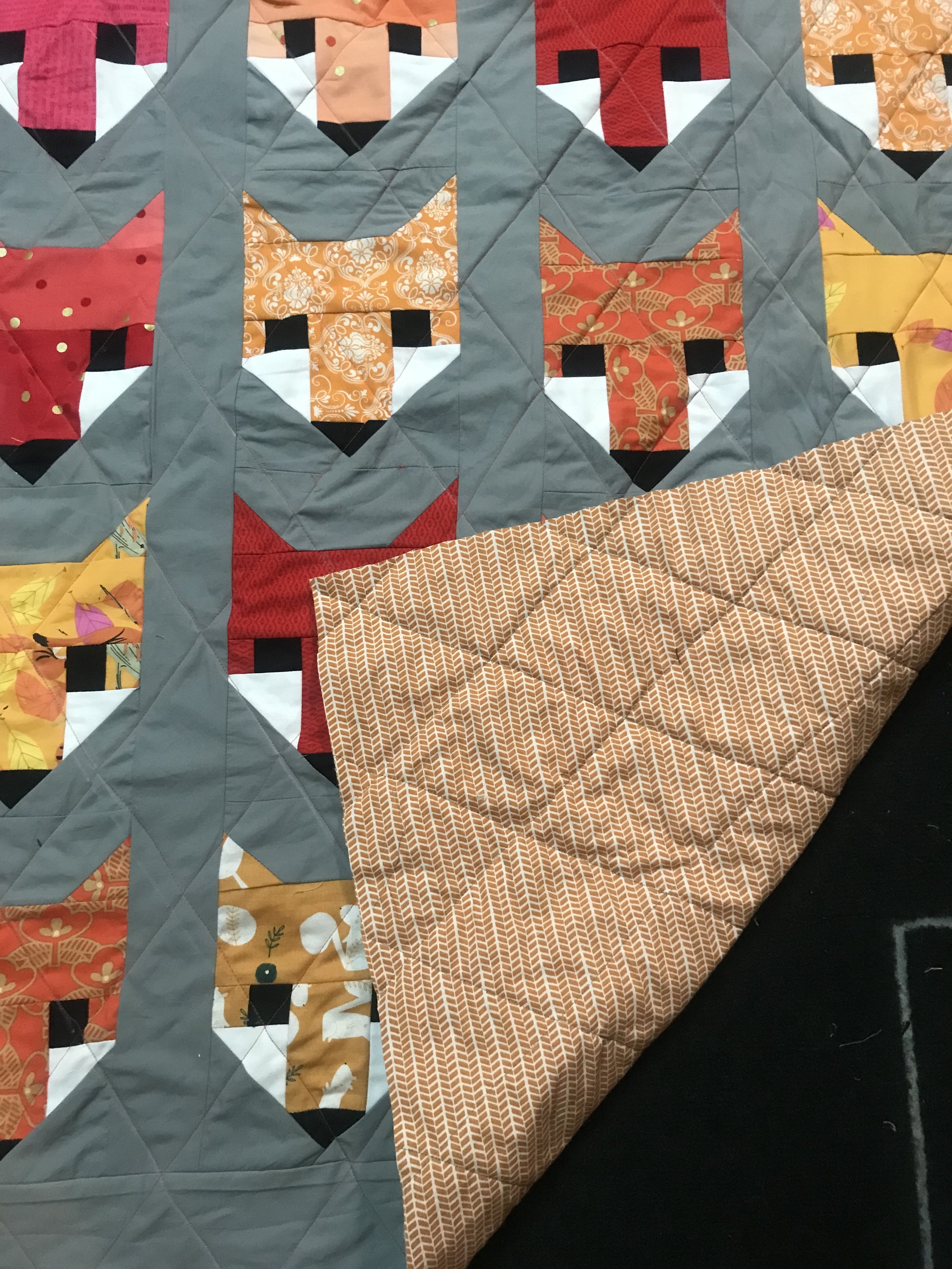I started working on this quilt in April 2021 when I first picked up Urban Quilting by Wendy Chow. Her book was one of the first quilting books I ever bought. When I was searching for books online I was immediately drawn to her modern patterns and bright colors. I decided to try my hand at the throw version of ‘Crosstown Buzz’ in a green and pink color palette. At this time I was shopping mostly from Pins and Needles so I picked out the Tiger Lily collection (Paintbrush Studio), a shetland flannel in a russet herringbone (Robert Kaufman), and a solid in the color Willow (Kona). I also picked up Aurifil 50 weight thread in Light Peony and Medium Spruce (2437 & 2885).
Initial fabric picks pulled from Pins & Needles
The first cuts of my fabric selection
While it was the 2nd quilt I had ever started, it was the first quilt I was making for myself (rather than giving it away). But because of this, this quilt ended up getting deprioritized in favor of the baby quilts I was making in 2021/2022. Then of course, when everything was put on pause while I was dealing with health issues, this quilt was left in a partial state.
Picking up this quilt was quite intimidating for several reasons. Mostly because I had to reckon with my old mistakes when trying to finish this quilt. Here is a quick summary of my past sins:
1) Due to the amount of pieces needed, I had try to cut my strips and triangles in bulk but hadn’t developed the techniques at the time to successfully cut it evenly and consistently.
2) I had not sewed all my seams with the same seam allowance. Which made my flying geese triangles smaller than they should of been.
3) While I had completely pieced half the blocks and squared them up before abandoning the project, there was still half the quilt to finish piecing. And for a 72 x 72 inch quilt that is not insignificant.
So I already knew walking back into this project I would need to do some aggressive cutting to try to keep things square and that I was going to have issues with my triangles lining up.
In Oct 2023, I started trying to orient myself to where I had left off in the pattern so I could pick up the rest of my pieces and make up the second half of the blocks. As I predicted, I ended up having to cut off quite a bit to square them up.
Once I had all the blocks completed, the next challenge was getting all the blocks to line up. I quickly realized that I was going to have cases where two halves of the triangle were not going to line up and that there wasn’t really much I could do about that.
By this point it was Nov 2023 and I was nervous about trying to feed this quilt through my 15-91 for the actual quilting part of the process due to the sheer size and I was also beginning to have issues with my thread snapping while quilting on my 15-91. Despite my attempts to adjust the tension, I was unable to solve the problem. So while I was arranging for my 15-91 to be serviced, I decided to take the opportunity to try out a Pfaff Ambition 620 at my local quilt shop.
I stitched in the ditch of the blocks using Light Peony as my bobbin thread (for the backing) and Medium Spruce as my thread for the front. The blocks are quite large though in this pattern, hence I was worried that the quilt spacing wasn’t dense enough. So I decided to add some hand stitching in 8 wt Acorn Thread’s ‘Maple Syrup’ (Trailhead Yarns) around one triangle in every block.
This kept me busy for a month or so and finally in Jan 2024 I was ready to tackle the binding. I ended up keeping the solid fabric in Willow (Kona) for the binding and machine sewed it to the front with my 15-91 (which had returned from servicing by this point). I finished the binding with hand stitching in the same 8 wt Acorn Thread’s ‘Maple Syrup’ (Trailhead Yarns). As I worked on the binding, I found a few places on the front where I failed to catch part of the binding due to misaligning my binding layers. Which led to me having to hand repair a few spots.
Hand stitching around a triangle
Hand stitching the binding to the back of the quilt
Repairing part of the binding
After a round in my washer and dryer, I did my final inspection for loose threads and weak spots. All I found was a few more spots on the binding that I had to hand stitch. Below is the final result!
I’m still struggling to figure out how to photograph quilts that are as large as this one. Short of hanging it from the ceiling, I’m not sure what else I can do.
It is a big relief to finally finish this quilt. And now that it is done I can comfortably move on to new things. I’m still trying to decide what my next quilt should be but I think I will take a break from triangles for a little while.




















